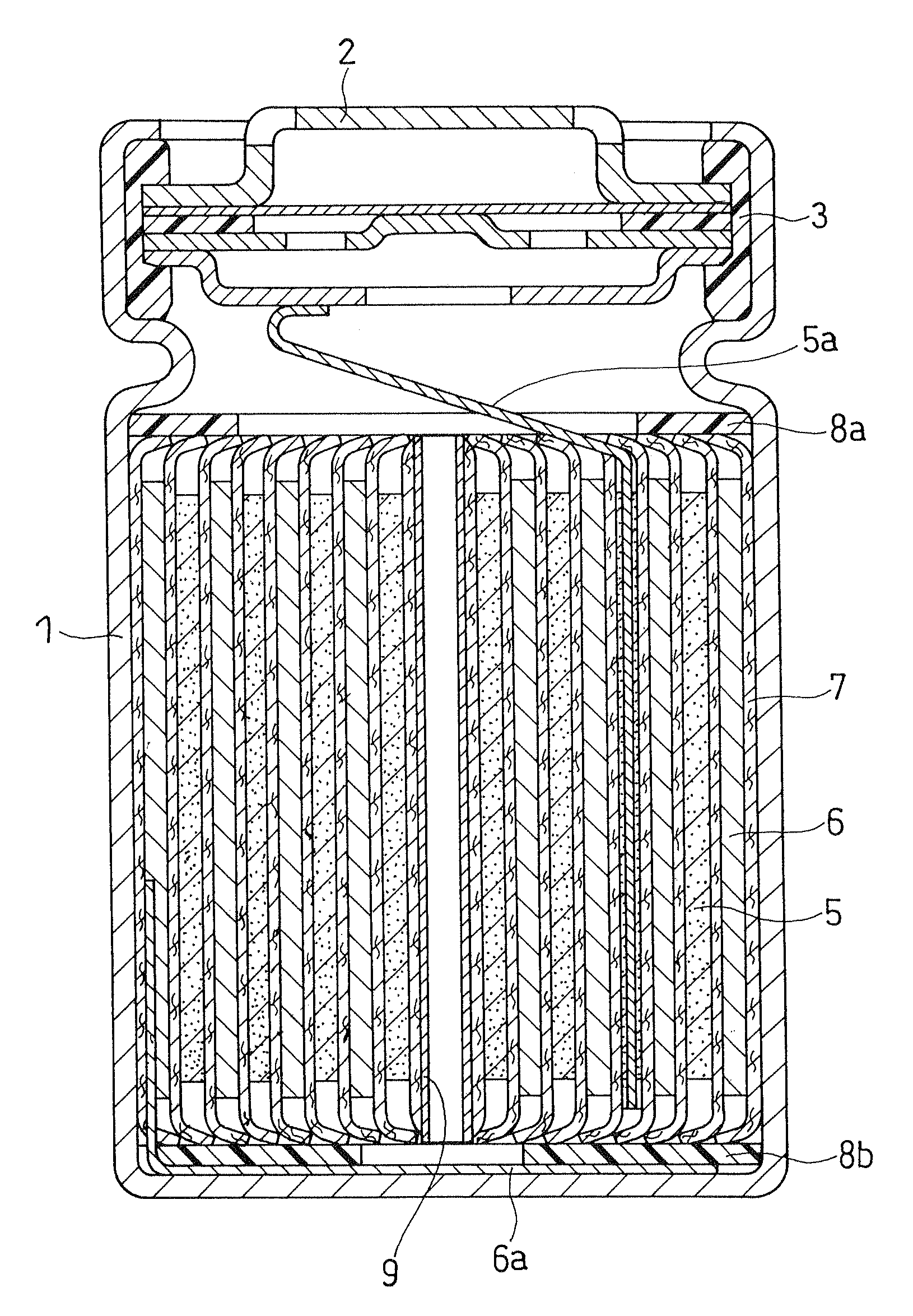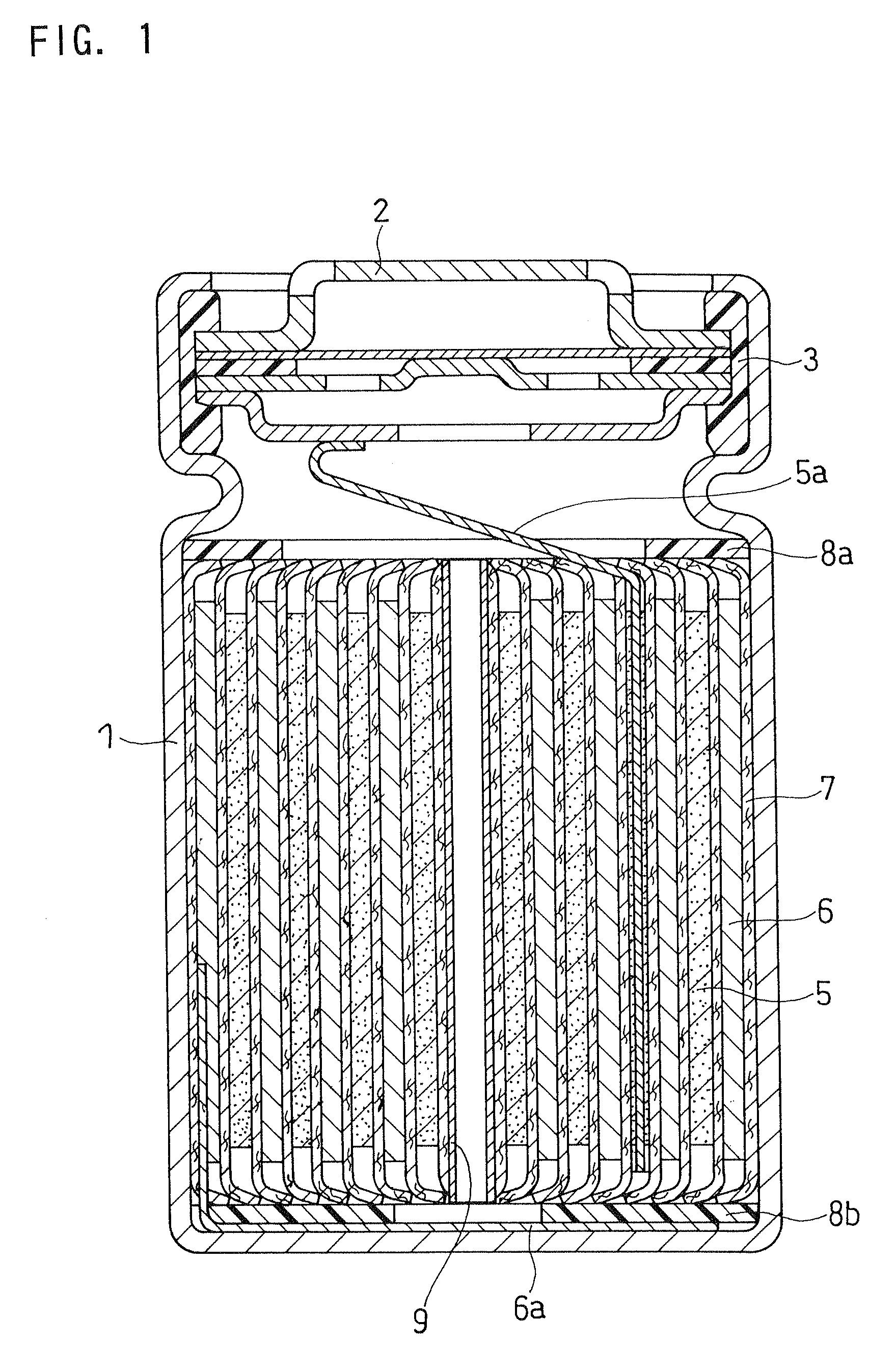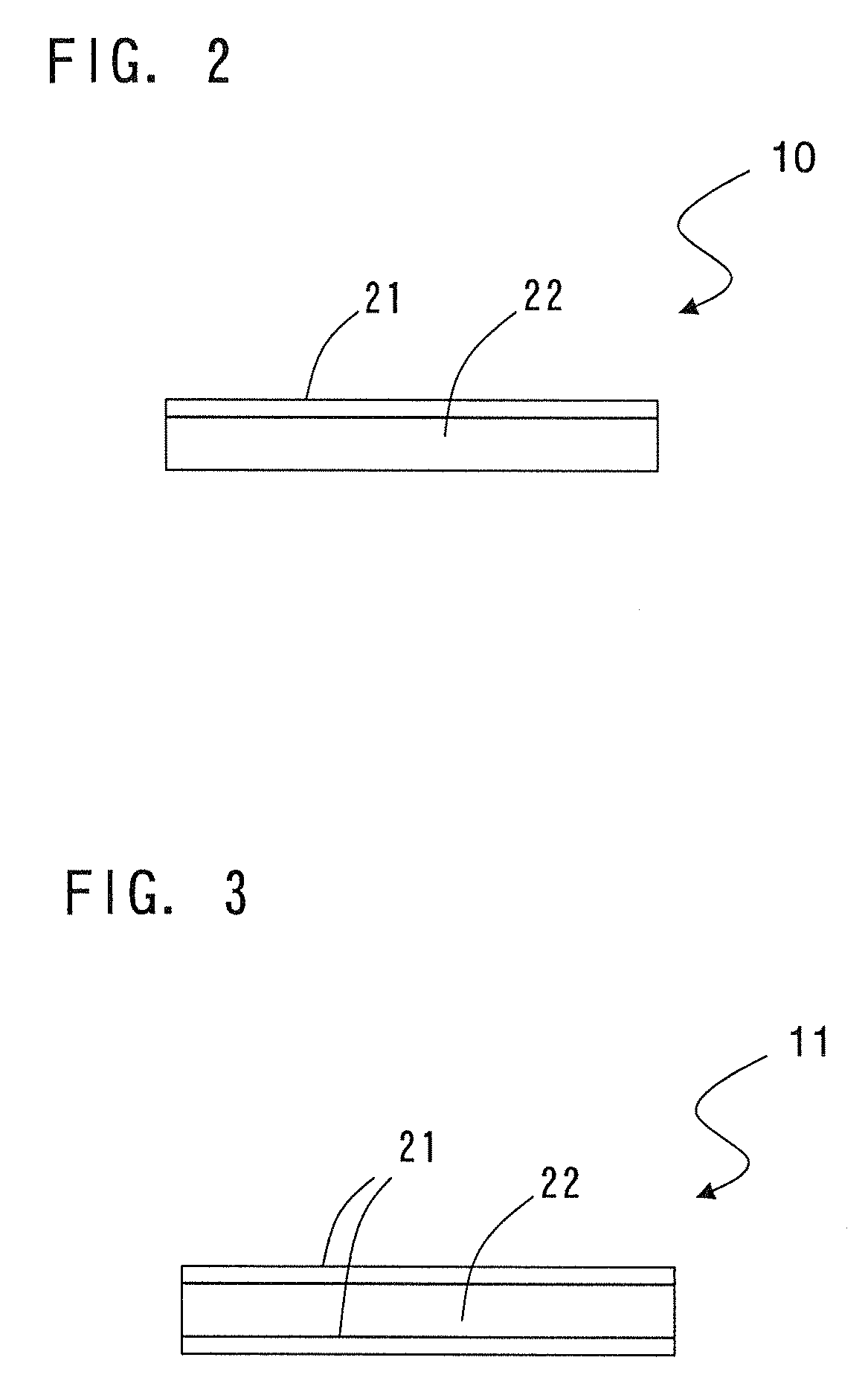Non-aqueous electrolyte secondary battery
a secondary battery and non-aqueous electrolyte technology, applied in the direction of cell components, electrical equipment, cell component details, etc., can solve the problems of reducing the precision of rolling out reel-like rolled products, and the tendency of frequent occurrence of misalignment in winding the electrode assembly, etc., to achieve excellent heat resistance, high capacity, and effective manufacturing
- Summary
- Abstract
- Description
- Claims
- Application Information
AI Technical Summary
Benefits of technology
Problems solved by technology
Method used
Image
Examples
example 1
[0061](a) Positive Electrode Preparation
[0062]A positive electrode mixture slurry was prepared by stirring and mixing 3 kg of lithium cobaltate, i.e., a positive electrode active material; 1 kg of an NMP solution dissolving 12 wt % of PVDF (product name: #1320, manufactured by KUREHA CORPORATION), i.e., a positive electrode binder; 90 g of acetylene black, i.e., a conductive agent; and an appropriate amount of NMP with a double-armed kneader. This slurry was applied on both sides of an aluminum foil with a thickness of 15 μm, i.e., a positive electrode current collector, except for a portion to be connected with a positive electrode lead. After the slurry was dried, the obtained film was rolled with a roller, to form a positive electrode active material layer with a positive electrode active material density of 3.3 g / cm3. The thickness of a positive electrode plate comprising the aluminum foil and the positive electrode active material layer was set to 160 μm. Afterwards, the positi...
example 2
[0077]A separator (second separator) was made in the same manner as Example 1, except that an antistatic agent was added to the polyethylene-made porous film instead of applying the antistatic agent with spray, and a cylindrical lithium ion secondary battery of Example 2 was made.
[0078]The antistatic agent was added to the polyethylene-made porous film as in below. To a melted, kneaded material including 35 parts by weight of high density polyethylene with a weight average molecular weight of 600000, 10 parts by weight of low density polyethylene with a weight average molecular weight of 200000, and 55 parts by weight of dioctyl phthalate (plasticizer), 0.1 wt % of sodium isoprene sulfonate (IPS manufactured by JSR, antistatic agent) was added relative to the amount of polyethylene resin, and afterwards, a polyethylene-made porous film containing an antistatic agent inside was made in the same manner as Example 1.
PUM
| Property | Measurement | Unit |
|---|---|---|
| diameter | aaaaa | aaaaa |
| thickness | aaaaa | aaaaa |
| thickness | aaaaa | aaaaa |
Abstract
Description
Claims
Application Information
 Login to View More
Login to View More - R&D
- Intellectual Property
- Life Sciences
- Materials
- Tech Scout
- Unparalleled Data Quality
- Higher Quality Content
- 60% Fewer Hallucinations
Browse by: Latest US Patents, China's latest patents, Technical Efficacy Thesaurus, Application Domain, Technology Topic, Popular Technical Reports.
© 2025 PatSnap. All rights reserved.Legal|Privacy policy|Modern Slavery Act Transparency Statement|Sitemap|About US| Contact US: help@patsnap.com



